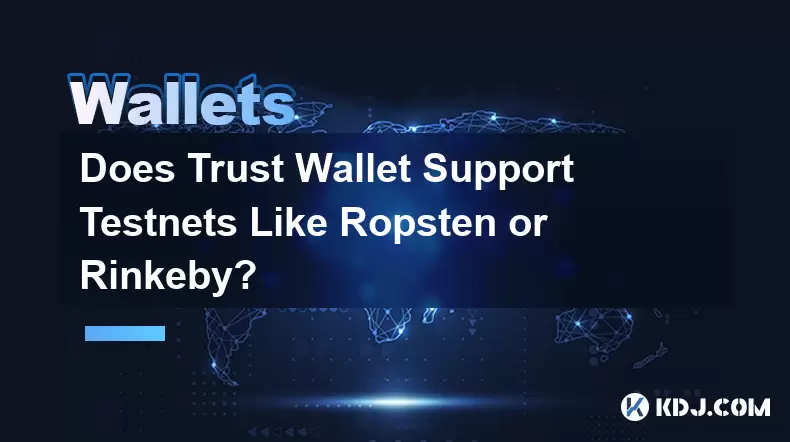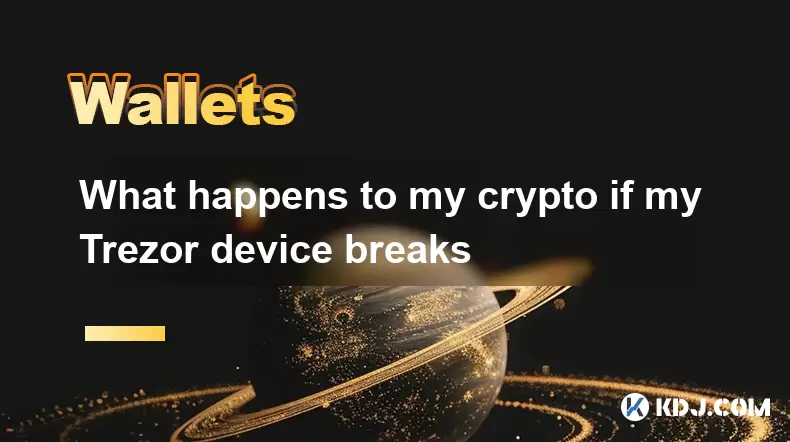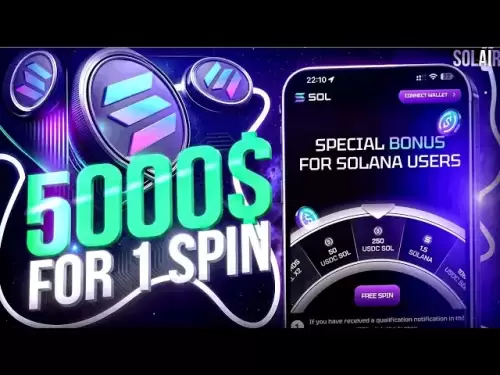-
 Bitcoin
Bitcoin $119,161.9671
1.52% -
 Ethereum
Ethereum $2,995.0722
2.34% -
 XRP
XRP $2.8555
5.32% -
 Tether USDt
Tether USDt $1.0002
0.00% -
 BNB
BNB $692.9308
1.48% -
 Solana
Solana $162.9611
1.87% -
 USDC
USDC $0.9999
0.00% -
 Dogecoin
Dogecoin $0.2014
2.84% -
 TRON
TRON $0.3032
0.90% -
 Cardano
Cardano $0.7464
6.51% -
 Hyperliquid
Hyperliquid $49.1533
5.71% -
 Stellar
Stellar $0.4773
24.77% -
 Sui
Sui $3.4979
3.93% -
 Chainlink
Chainlink $15.8552
6.01% -
 Hedera
Hedera $0.2401
23.85% -
 Bitcoin Cash
Bitcoin Cash $510.0474
0.97% -
 Avalanche
Avalanche $21.5550
4.82% -
 UNUS SED LEO
UNUS SED LEO $9.0389
-0.47% -
 Shiba Inu
Shiba Inu $0.0...01340
2.27% -
 Toncoin
Toncoin $2.9910
0.62% -
 Litecoin
Litecoin $96.4406
4.34% -
 Polkadot
Polkadot $4.0359
4.59% -
 Monero
Monero $338.4759
2.80% -
 Uniswap
Uniswap $8.6460
4.01% -
 Dai
Dai $0.9999
0.00% -
 Ethena USDe
Ethena USDe $1.0007
0.03% -
 Pepe
Pepe $0.0...01254
3.26% -
 Bitget Token
Bitget Token $4.3969
0.79% -
 Aave
Aave $312.2641
3.98% -
 Bittensor
Bittensor $397.0731
4.17%
Does Trust Wallet Support Testnets Like Ropsten or Rinkeby?
Trust Wallet doesn't officially support Ethereum testnets like Ropsten or Rinkeby by default, but you can manually add them using custom network settings for dApp development and testing.
Jul 11, 2025 at 05:01 am

Trust Wallet and Testnet Compatibility
Trust Wallet, a widely used mobile wallet for managing cryptocurrencies, primarily focuses on supporting mainnet blockchains. However, users often wonder whether Trust Wallet supports testnets like Ropsten or Rinkeby, especially when developing decentralized applications (dApps) or testing smart contracts.
The short answer is that Trust Wallet does not officially support testnets such as Ropsten or Rinkeby out of the box. These Ethereum-based testnets are commonly used by developers to simulate transactions without using real ETH. While Trust Wallet allows users to interact with various blockchains through custom network settings, it doesn’t come pre-configured with testnet options.
How to Add Custom Networks in Trust Wallet
Although Trust Wallet does not include Ropsten or Rinkeby testnets by default, you can manually add them using custom network configurations. This requires technical knowledge and careful setup to ensure compatibility and functionality.
- Open Trust Wallet and navigate to the Ethereum wallet.
- Tap the three dots next to the ETH balance and select "Edit Networks."
- Choose "Add Custom Network."
- Fill in the required parameters:
- Network Name: Ropsten or Rinkeby
- RPC URL: Use a service like Infura or Alchemy to generate a valid endpoint
- Chain ID: For Ropsten it's
3, for Rinkeby it's4 - Symbol: ETH
- Block Explorer URL: Etherscan-compatible explorer for the selected testnet
Once all fields are correctly filled, save the configuration. You should now be able to switch between networks and interact with dApps built on those testnets.
Acquiring Test ETH for Transactions
To use a testnet effectively, you'll need test ETH to perform transactions. Since Trust Wallet doesn't provide faucets directly, you must obtain test tokens from external sources.
- Visit a faucet site compatible with the testnet you're using (e.g., Ropsten Faucet or Rinkeby Faucet).
- Connect your Trust Wallet address via the Receive option.
- Submit the request and wait for the transaction to complete.
Make sure you're using the correct network within Trust Wallet before requesting test ETH. Sending funds to the wrong network may result in permanent loss.
Interacting with dApps on Testnets
After setting up the custom network and acquiring test ETH, you can start interacting with dApps deployed on Ropsten or Rinkeby.
- Open a browser within Trust Wallet or use a third-party dApp browser.
- Navigate to the dApp you want to test.
- When prompted, connect your Trust Wallet account.
- Ensure the app is configured for the same testnet you added.
- Perform transactions using your test ETH balance.
Always double-check contract addresses and transaction details to avoid errors. Although testnets don't involve real money, mistakes during development can still impact progress and debugging efforts.
Potential Issues and Troubleshooting
Using testnets in Trust Wallet isn't always seamless. Some common issues include:
- Incorrect network parameters: Double-check Chain ID, RPC URL, and Block Explorer settings.
- Missing test ETH: Verify your address on the appropriate testnet explorer.
- Unsupported features: Not all dApps support every testnet; confirm compatibility beforehand.
- Transaction failures: Gas fees may fluctuate even on testnets; adjust accordingly.
If problems persist, consider resetting network settings or re-importing your wallet using the recovery phrase. Always back up your seed phrase securely before making changes.
Alternative Tools for Testnet Development
While Trust Wallet offers flexibility through custom networks, other tools may provide better support for testnet environments:
- MetaMask: Comes pre-loaded with multiple testnets including Ropsten, Rinkeby, and Goerli.
- Remix IDE: Allows direct deployment to testnets using injected Web3 providers.
- Hardhat or Truffle: Local development frameworks that integrate with testnets and wallets.
These alternatives might offer a smoother experience for developers who frequently work with testnets and require more robust tooling than what Trust Wallet provides natively.
Frequently Asked Questions (FAQs)
Q: Can I use Trust Wallet to deploy smart contracts on Ropsten or Rinkeby?
Yes, but only after manually configuring the network and acquiring test ETH. Deployment requires interaction with development tools like Remix or Hardhat, which interface with Trust Wallet through Web3 injection.
Q: Why doesn't Trust Wallet support testnets by default?
Trust Wallet targets end-users rather than developers. Its design prioritizes simplicity and security for mainnet operations, leaving advanced features like testnet integration to be handled manually.
Q: What happens if I send real ETH to a testnet wallet in Trust Wallet?
Sending real ETH to a testnet wallet results in irreversible loss. Testnet and mainnet assets are incompatible. Always verify the active network before initiating any transfer.
Q: Is there a way to automate testnet switching in Trust Wallet?
Currently, Trust Wallet does not offer automatic network detection or switching. Users must manually change networks based on the dApp or contract they're interacting with.
Disclaimer:info@kdj.com
The information provided is not trading advice. kdj.com does not assume any responsibility for any investments made based on the information provided in this article. Cryptocurrencies are highly volatile and it is highly recommended that you invest with caution after thorough research!
If you believe that the content used on this website infringes your copyright, please contact us immediately (info@kdj.com) and we will delete it promptly.
- Bitcoin: Buy the Dip Before the March 2028 Halving?
- 2025-07-14 12:30:11
- Seattle Sports, BlockDAG, and Price Rise: What's the Buzz?
- 2025-07-14 12:50:12
- Bitcoin Price Rockets: New ATHs and What's Next?
- 2025-07-14 13:10:15
- Metaplanet's Bold Bitcoin Bet: A New Corporate Strategy?
- 2025-07-14 13:10:15
- Bitcoin Blasts Past $119,000: Is $120,000 Next, or Are We Due for a Reality Check?
- 2025-07-14 13:30:12
- Satoshi Nakamoto: From Crypto Creator to Richest Person?
- 2025-07-14 13:30:12
Related knowledge

What is a hardware wallet's secure element
Jul 11,2025 at 10:14pm
What is a Hardware Wallet's Secure Element?A hardware wallet is one of the most secure ways to store cryptocurrencies. Unlike software wallets, which ...

What is the difference between a custodial and non-custodial wallet
Jul 13,2025 at 03:21am
Understanding Wallet Types in CryptocurrencyIn the world of cryptocurrency, digital wallets play a crucial role in managing and securing assets. A wal...

How to add a new network to MetaMask
Jul 11,2025 at 11:42pm
Understanding the Need to Add a New NetworkWhen using MetaMask, a popular Ethereum-based cryptocurrency wallet, users often need to interact with diff...

How to add Ethereum L2 networks like Arbitrum to Trezor
Jul 11,2025 at 12:36am
What Is Ethereum L2 and Why Add It to Trezor?Ethereum Layer 2 (L2) networks, such as Arbitrum, are scaling solutions designed to reduce congestion on ...

What happens to my crypto if my Trezor device breaks
Jul 11,2025 at 01:49pm
Understanding Hardware Wallet FailureWhen you store cryptocurrency in a Trezor hardware wallet, the private keys are kept offline, offering a high lev...

How to find a specific receiving address on my Trezor
Jul 09,2025 at 10:36pm
Understanding the Purpose of a Receiving AddressA receiving address is a unique identifier used in blockchain networks to receive cryptocurrency. Each...

What is a hardware wallet's secure element
Jul 11,2025 at 10:14pm
What is a Hardware Wallet's Secure Element?A hardware wallet is one of the most secure ways to store cryptocurrencies. Unlike software wallets, which ...

What is the difference between a custodial and non-custodial wallet
Jul 13,2025 at 03:21am
Understanding Wallet Types in CryptocurrencyIn the world of cryptocurrency, digital wallets play a crucial role in managing and securing assets. A wal...

How to add a new network to MetaMask
Jul 11,2025 at 11:42pm
Understanding the Need to Add a New NetworkWhen using MetaMask, a popular Ethereum-based cryptocurrency wallet, users often need to interact with diff...

How to add Ethereum L2 networks like Arbitrum to Trezor
Jul 11,2025 at 12:36am
What Is Ethereum L2 and Why Add It to Trezor?Ethereum Layer 2 (L2) networks, such as Arbitrum, are scaling solutions designed to reduce congestion on ...

What happens to my crypto if my Trezor device breaks
Jul 11,2025 at 01:49pm
Understanding Hardware Wallet FailureWhen you store cryptocurrency in a Trezor hardware wallet, the private keys are kept offline, offering a high lev...

How to find a specific receiving address on my Trezor
Jul 09,2025 at 10:36pm
Understanding the Purpose of a Receiving AddressA receiving address is a unique identifier used in blockchain networks to receive cryptocurrency. Each...
See all articles

























































































